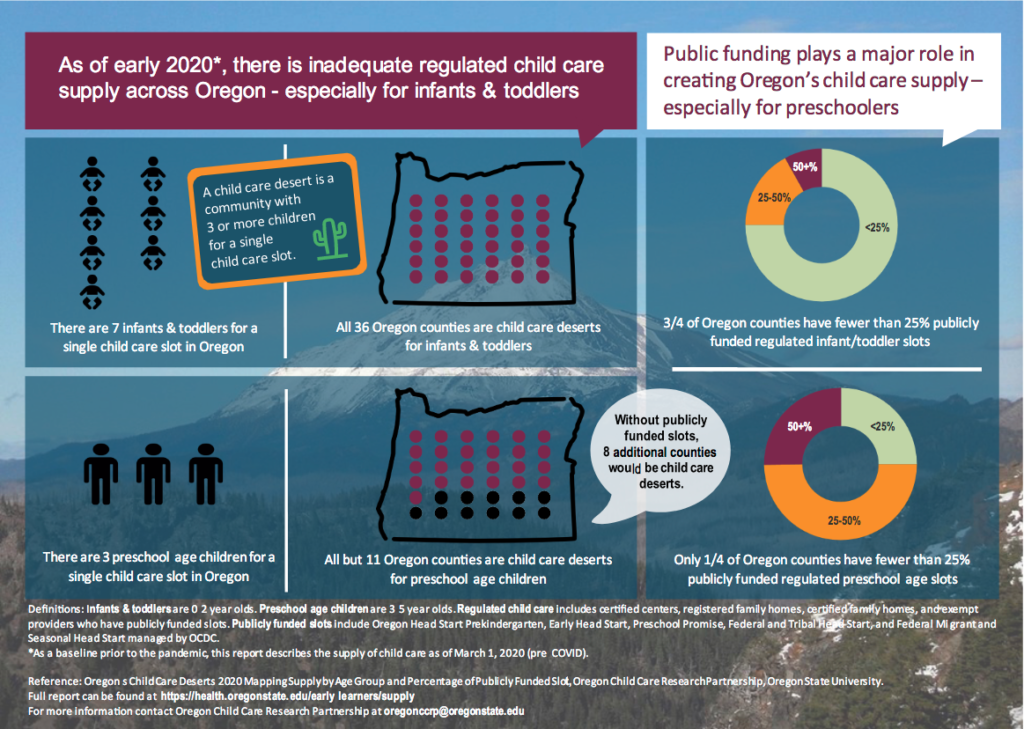Despite a child care shortage, the State of Oregon creates more hurdles for in-home providers
According to an Oregon State University study, released in early 2020, all thirty-six Oregon counties were considered child care deserts, especially in regard to infants and toddlers. These deserts are defined as communities where there are three or more children for every one available child care slot.
Despite the shortage of available slots, in-home providers are faced with challenging new regulations, making it difficult to keep their businesses open. Among providers’ lengthy list of concerns are building code changes that can require the cost-prohibitive installation of commercial sprinkler systems, the delay of federally funded grants meant to keep pandemic-impacted providers afloat, and a ban on both suspensions and expulsions, meaning a provider cannot expel a child client from their program, even if they’re a danger to others.
Anneliese Sheahan of Oregon Child Care Providers Together, a licensed family child care union out of Salem, summarizes the issues facing the industry on the union’s Facebook page.
In online discussions surrounding the controversial regulations, some providers who oppose the changes feel the ban on client expulsions and sprinkler-system requirements were born of good intentions, regardless of the detrimental real-world impact. Others expressed worries that the State of Oregon is purposefully trying to drive in-home providers out of business in order to monopolize the child care industry.
Oregon Child Care Providers Together—OregonCCPT—is working to repeal the building-code rule changes, but if they’re unsuccessful, more of these predominately women-owned businesses will close their doors, and Oregon parents will have fewer child care options.
More information on OregonCCPT’s efforts can be found on their website and Facebook page.









